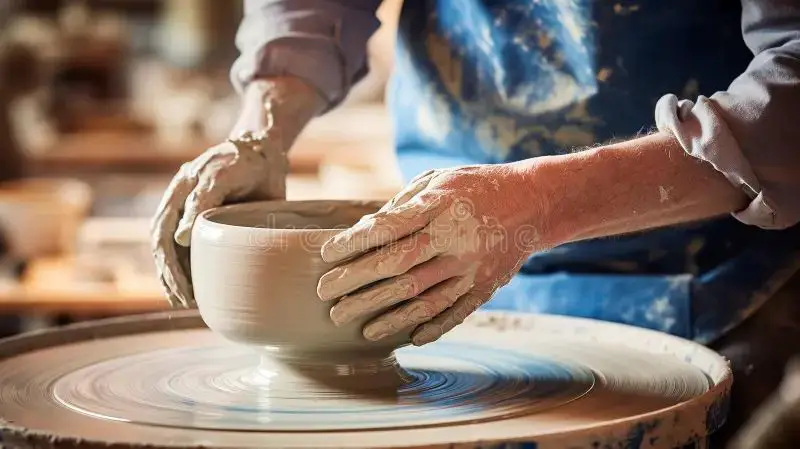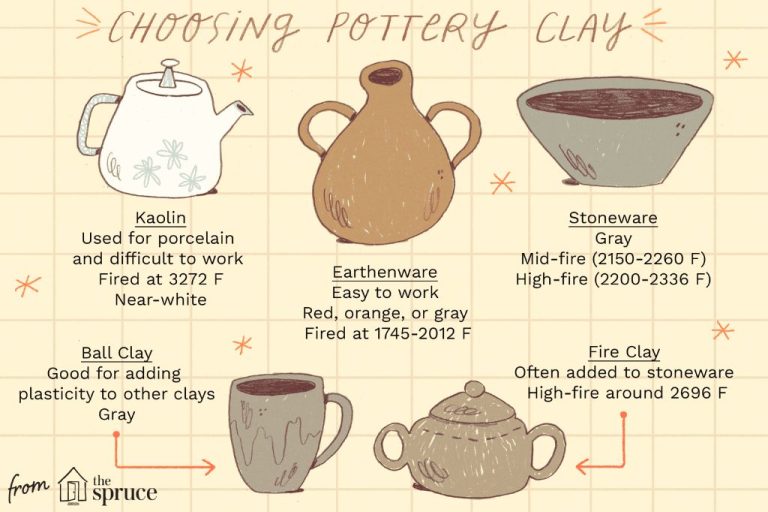Is Opening A Pottery Studio Profitable?
Opening a pottery studio can be a profitable venture for creative entrepreneurs looking to turn their passion into a sustainable business. A pottery studio allows artists to create and sell their work direct to consumers while also offering pottery classes and workshop experiences. The business model relies on multiple revenue streams from ceramic sales, class fees, private events, and more.
However, launching a successful pottery studio requires careful planning and preparation. You’ll need adequate startup capital, an appropriate facility, talented staff, effective marketing, and strong management skills. Competition from existing studios and online ceramic retailers can also impact profit margins.
This article provides an in-depth look at the key factors involved in opening and operating a pottery studio business. We’ll examine startup costs, location requirements, staffing, revenue opportunities, profit potential, marketing tactics, and regulatory considerations. Read on for expert insights that will help determine if opening your own pottery studio can be a profitable venture.
Startup Costs
Starting a pottery studio requires significant upfront capital investment. The major costs include equipment like pottery wheels, kilns, and tools, as well as ongoing supplies like clay, glazes, and studio rent.
A quality electric pottery wheel can cost $500-$2,000 depending on size and features [1]. Kilns are another major investment, with prices ranging from $600 for a small kiln to over $2,000 for large production kilns. Basic pottery tools like bats, ribs, cutters, and trimming tools can add up to $500 or more.
Clay is a consumable that must be continually replenished, at a cost of $25-$50 per 25 lb bag. Glazes and underglazes also require ongoing purchases for a fully-stocked selection. In total, expect to invest at least $5,000-$10,000 just for starting equipment and initial supplies when opening a studio.
Facility Requirements
When setting up a pottery studio, the type of space and zoning are important considerations. Many choose converted sheds, garages, or spare rooms in their homes to use as a studio space. Make sure to check local zoning laws to ensure a home-based studio is allowed in your area (Homestead Pottery). If looking for a commercial space, research locations zoned for light industrial or commercial use.
In terms of utilities, access to electricity and running water are essential. Pottery wheels, kilns, and certain tools will require power outlets. You’ll also need access to water for mixing clay and cleaning (Skutt). Make sure your studio space has adequate electrical capacity and plumbing to support pottery equipment. Other utility considerations are ventilation, especially if firing a gas kiln, and climate control to maintain consistent conditions for drying and storing clay.
When laying out the studio, allow enough room for equipment, work tables, storage, and movement around works spaces. Having 18-36 inches of clearance around kilns is recommended by manufacturers (Skutt). Also factor in any specialized flooring or countertops that can withstand heavy equipment, clay spills, and high foot traffic.

Staffing Needs
A pottery studio will require staff for instructing classes, studio maintenance, and assisting customers. According to ZipRecruiter, most ceramic studios hire instructors who have a bachelor’s degree in fine arts with a concentration in ceramics, though formal education is not always required. Instructors lead classes for students of various skill levels in wheel throwing, handbuilding, glazing, and firing techniques.
Maintenance staff keep the studio clean and ensure equipment like pottery wheels, kilns, and glazes are in working order. Job postings like this one from Mill Valley Potters Studio show that no prior experience is required for maintenance positions, which are often part-time or work-trade roles.
Customer service associates assist with studio operations like managing registrations, answering questions, selling clay/tools/glazes, and providing general support. As noted in the job description from the City of Mesa, sales associates may need to work flexible hours including evenings and weekends.
Revenue Streams
There are several ways a pottery studio can generate revenue:
Classes are a major source of income for most pottery studios. Offering beginner, intermediate, and advanced wheel throwing and handbuilding classes allows a studio to generate revenue from class fees and clay purchases. Many studios offer 6-8 week sessions as well as one-day workshops. According to Reddit users, class fees range from $150-300 per 6-8 week session. With 10-15 students per class and multiple class sessions per week, studios can generate thousands in revenue from classes alone.
Memberships are another revenue stream, where customers pay a monthly fee for unlimited studio access. Many studios charge $100-200 per month for memberships. This provides a stable source of income in between class sessions. Some studios require memberships in order to take classes.
Retail sales of finished pottery and supplies accounts for additional revenue. Most studios sell their instructors’ work as well as student pieces. Handmade mugs, bowls, and vases are popular retail items. Sales of clay, tools, and glazes to students also contribute to overall profit. According to Pottery Crafters, experienced potters can earn up to $30 per piece sold at retail.
Profit Margins
Setting the right price points for classes, products, and services is crucial to achieving profitability for a pottery studio. According to a pottery business blog post by PYOP Accounting, studios should aim for a 15% profit margin at the bottom line (PYOP Accounting). FinModelsLab cites profit margins ranging from 20-40% for clay pottery businesses (FinModelsLab). Reaching the break-even point as soon as possible is also key.
When determining pricing, studios need to factor in all costs of materials, labor, and overhead. Classes and specialty workshops can be priced premium, especially if they include rare techniques or materials. Production pottery pieces can also yield good margins when efficiently made. Ensuring adequate volume of sales is important for covering fixed costs. Marketing and customer retention will play a big role in profitability over time.
Marketing
Marketing your ceramic studio will be crucial for attracting customers and generating visibility. Some key marketing strategies to consider include:
Social media marketing through platforms like Instagram and Facebook can provide a cost-effective way to showcase your studio’s products, behind-the-scenes content, and promote events or classes. Dedicating time to building an organic following and engaging with potential customers online is important. You can also run targeted ads to get your content in front of relevant audiences. Top 10 ceramic studio branding ideas and inspiration provides inspiration for branding and marketing a ceramics studio on social platforms.
Hosting in-studio events like exhibition openings, classes, or workshops can drive local foot traffic. Partnering with other local businesses like cafes, galleries, or shops on collaborative events can expand your reach. Consider seasonal events around holidays or occasions when people purchase ceramics as gifts.
Look for partnership opportunities with schools, art programs, senior centers, or community organizations to teach on-site pottery classes. This can raise awareness of your studio and skills. Offer group rates or bundle package deals to make partnerships more appealing.
Competition
Opening a pottery studio will naturally involve competition from other businesses.
The main competitors for pottery studios are other small independent studios, community centers that offer art classes, and online retailers selling pottery supplies and kits (Ibisworld).
There are over 5,000 independently owned paint-your-own pottery studios across the United States, making it a highly fragmented market (Ibisworld). Most studios are small businesses that generate under $1 million in annual revenue. They compete primarily based on location, pricing, quality of instruction, and atmosphere.
Many community centers, libraries, schools, and churches offer pottery classes as well. While they may not be full-scale studios, they provide an affordable alternative for people wanting to work with clay and access kilns without buying their own equipment. These community offerings can limit the customer base for independent studios.
Online retailers like Amazon, Etsy, and large craft stores provide competition through selling pottery supplies directly to consumers. People can easily buy clay, tools, kilns, and glazes online to work on projects at home. This reduces the demand for studio space and equipment. However, working from home does not provide the same social experience or expert instruction as an independent studio.
Regulations
Starting a pottery studio requires adhering to certain regulations. The most important items to be aware of are business licenses, taxes, and insurance.
You will need to register your pottery business and obtain the necessary local and state licenses. This generally involves registering your business name and filing paperwork with your city or county clerk’s office (https://potterycrafters.com/starting-a-pottery-business/).
There are a variety of taxes associated with owning a pottery business. You will need to pay income tax on your earnings, as well as collect and remit any required sales tax. If you have employees, you’ll also need to pay payroll taxes. Working with an accountant can help ensure you are compliant with all tax regulations (https://www.soulceramics.com/pages/starting-pottery-business-guide).
It’s also essential to have adequate business insurance, including liability coverage in case a customer gets injured at your studio. Product liability insurance can protect you in case of issues with your pottery. Your city may also require special workshop or studio insurance (https://potterycrafters.com/starting-a-pottery-business/).
Conclusion
In summary, opening a pottery studio can be a profitable venture with the right business plan and execution. The startup costs, while not insignificant, can be managed through careful planning and securing financing. The keys to profitability include finding an ideal facility, hiring talented staff, developing diverse revenue streams, maintaining reasonable profit margins, effective marketing, minimizing competition, and adhering to regulations. Success ultimately depends on producing high quality pottery, building a loyal customer base, and providing a rewarding experience. With passion, persistence, and sound business practices, a pottery studio can thrive and achieve sustainable profits over the long-term.


